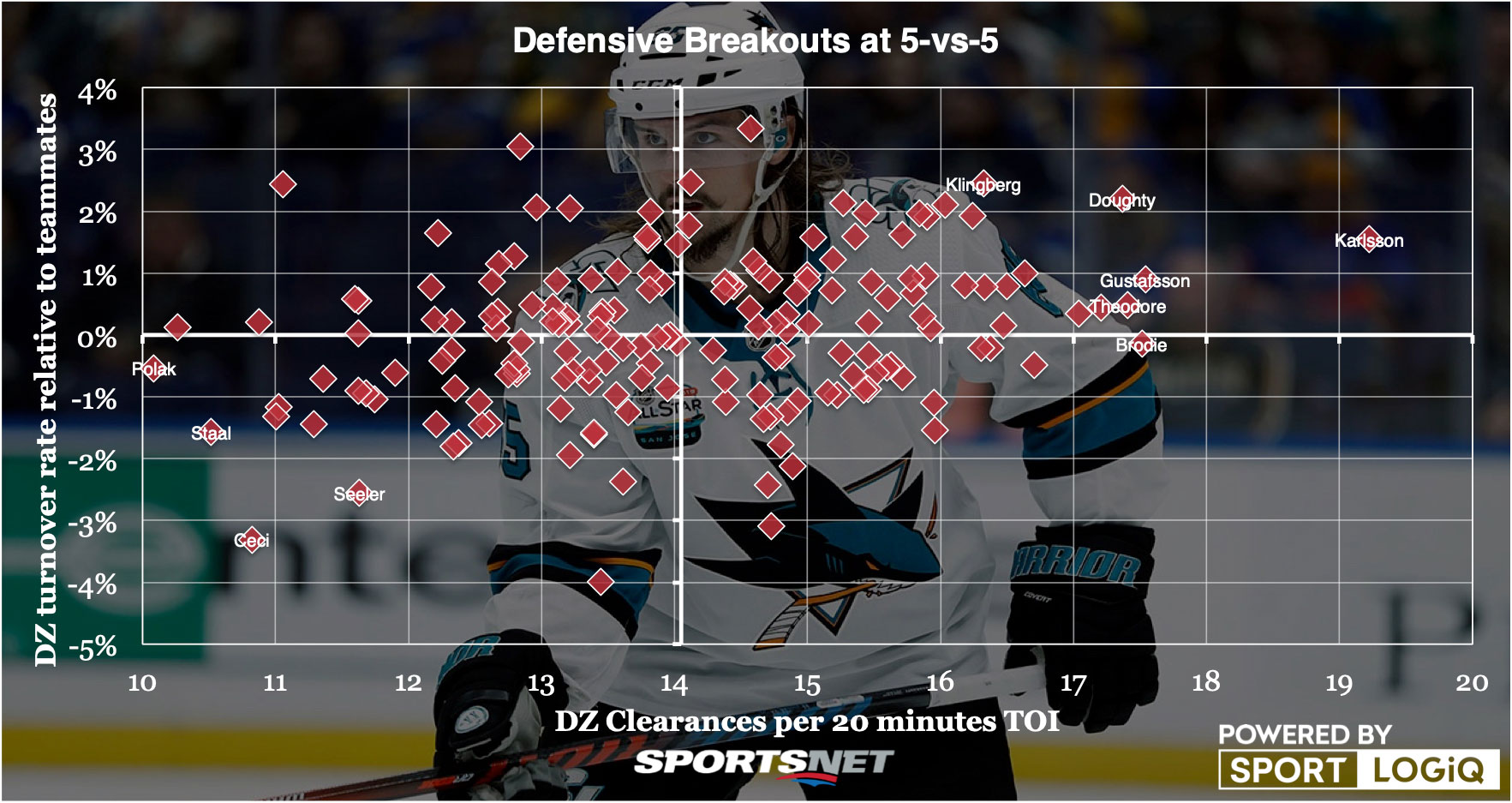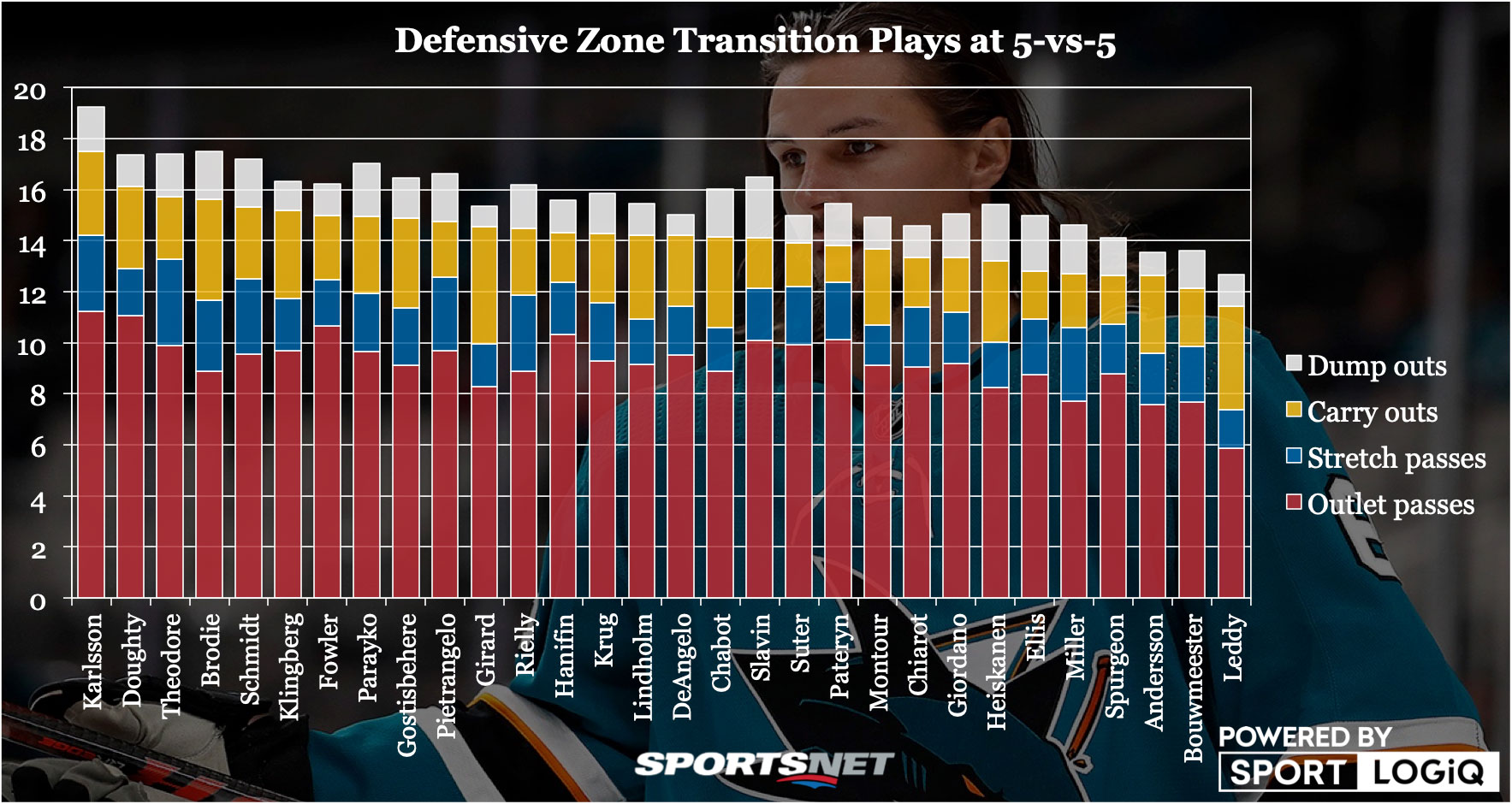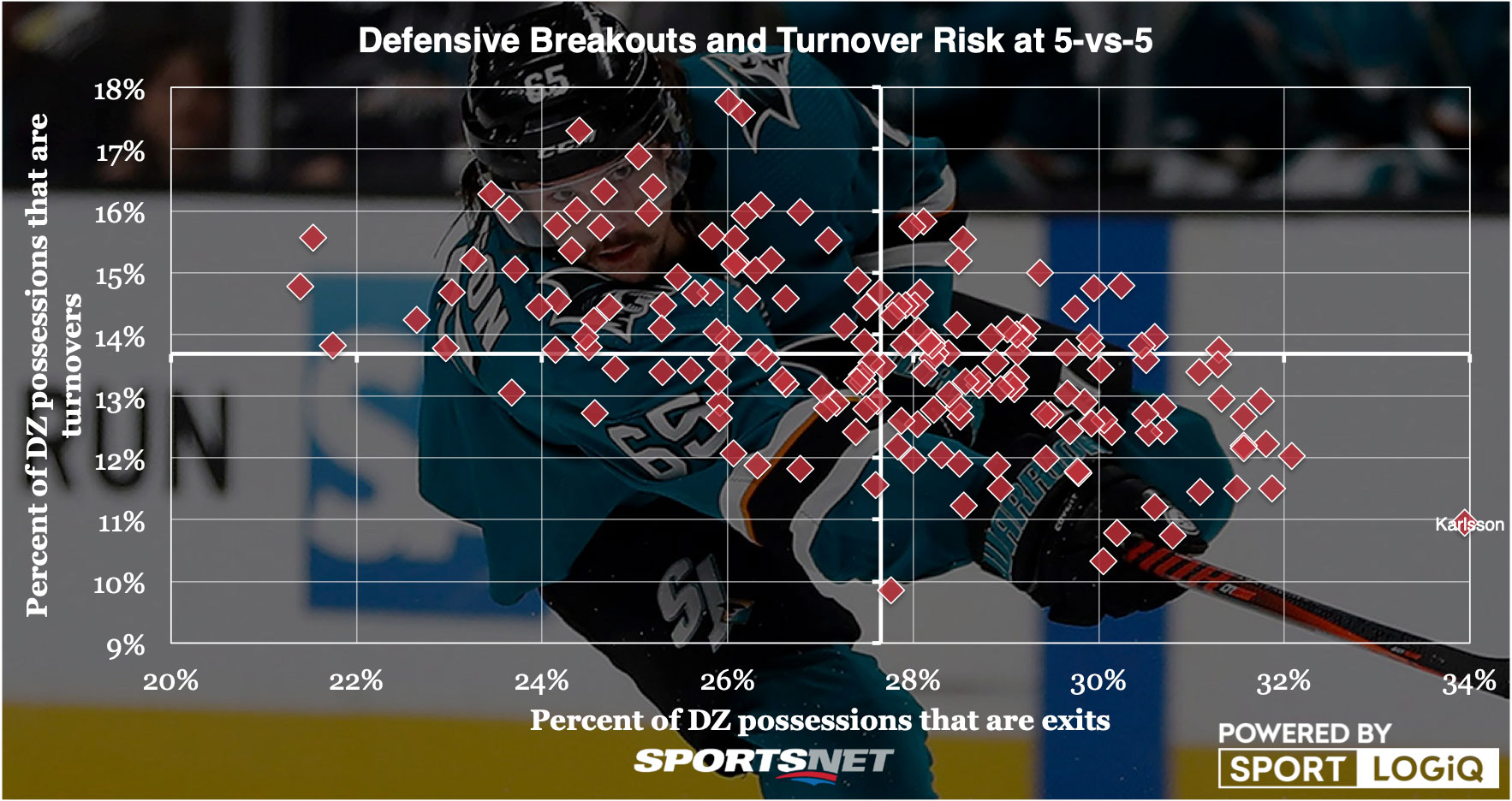Continuing our pre-season primer for 2019-20, we’ve already looked at the game’s best 5-on-5 passers and shooters, so we’ve been talking about forwards a whole lot without so much of a mention of defencemen.
That changes today, because we’re shifting away from the things that directly create offence to what allows offensive play to happen and the most important aspect of being a defenceman in the modern game: moving the puck out of the defensive zone.
Breakouts are one of the most heavily focused on areas of coaching and there’s a lot to unpack about them. Some teams prefer to rip the puck off the glass and chase it down, some like to skate the puck out as a unit, and some like to stretch the ice and make long passes.
All methods have their pros and cons, but getting the puck out of the defensive zone is key to producing offence, and even more important for limiting offence against your own team.
[snippet id=4167285]
In order to figure out where to even begin to break down breakouts, we have to think about the important components involved. How often a player is responsible for exiting the zone matters, but we also have to figure out if a player spends an inordinate amount of time in their own zone because they’re poor at defending in the first place.
We also have to evaluate that volume with how often each player fails at making those plays, especially when the failures result in a turnover.
To start out, let’s once again take a general look at the defencemen who successfully move the puck out of their own zone, contrasting the total number of clearances each player completes per 20 minutes played with their defensive zone turnover rate relative to teammates.

The turnover rate for this graph is inverted so that positive numbers mean a player has a lower turnover rate than their teammates. The axis as usual cross at the league averages.
At a glance there are two sets of extremes, with the players who really struggle to move the puck at the bottom left, and those who are elite transition players in the top right.
Among the top group, Erik Karlsson really stands on an island. Other excellent puck movers such as Drew Doughty and John Klingberg have slightly superior turnover rates, but Karlsson’s level of involvement in breakouts is unparalleled around the league.
However, what we’re looking at here is all exits combined: passes, carry outs and dump outs. We haven’t accounted for how much time players are spending in their own zone.
Even if the names at the top make sense, confirmation bias is a thing, so let’s look at the breakdowns of how each player is exiting the zone. Instead of looking at the top-30 players in terms of zone exit volume, let’s look at the top 30 players with the highest per cent of their total puck touches in the defensive zone that result in a zone exit.
This will allow us to weed out players who are stuck in their own zone for long stretches and accumulate a lot of exits due to time spent more than efficiency. This look will also reward players who exit their zone quickly and keep opponents out of it, so they don’t necessarily get a lot of credit when examining only volume.

Ordered by number of completed controlled exits, once again Karlsson leads the pack, and you can see how little most good puck movers rely on dump outs.
Some players like Sam Girard and Nick Leddy rely more on their skating than is typical and record lots of carry outs. But overall the method of choice in most situations is the outlet pass, which is defined as a forward pass from inside the defensive zone where the recipient is not beyond the centre-ice red line. A stretch pass goes beyond the red line, and is usually a situational tactic, though some teams like the Maple Leafs and Vegas Golden Knights push the envelope more often there.
It’s notable that the last three players in the top 30 here actually complete fewer zone exits than the league average, which means that we are finding some hidden gems in this area that volume would leave behind.
Jay Bouwmeester has many faults in his game nowadays, but he remains an efficient player at clearing the zone, which might be why coaches continue to highly value him. Rasmus Andersson had an underrated rookie campaign for the Calgary Flames last season, with a foundation of solid transition play. Nick Leddy is not a good defensive player, but the impact he does have on defence is built around his ability to alleviate danger by getting the puck out, with his skating being his biggest asset.
Still though, I think we can find a way to simplify this, and maybe more accurately represent both the effectiveness and the risks involved in breakouts. Keeping in mind the turnover rates relative to team, let’s go backwards a step and include all defencemen who played 750 or more minutes last season and look at all of their defensive zone possessions.
What percentage of those possessions resulted in an exit? What percentage resulted in a turnover? Let’s plot that out and see what it looks like.

Looking at raw turnover rates, it’s the bottom right quadrant that is now the good area to be in, and once again we have one player standing far away from the rest of the pack.
No matter what way we break things down here, the result remains the same: there are tons of good, young transition players who can break out of their own zone effectively, but no one in the league can hold a candle to Karlsson.
We can argue about whether or not Karlsson is an effective defender without the puck. There are warts in his game both due to some risks he takes and lingering injuries, but the defensive and offensive impact he has simply by exiting his own zone continually, with the puck under his control, without causing turnovers, makes him among the best players in the game today.
Karlsson could not score a point this season at 5-on-5 and he would likely still be one of the 10 most valuable defencemen simply because of this skill.
[relatedlinks]








